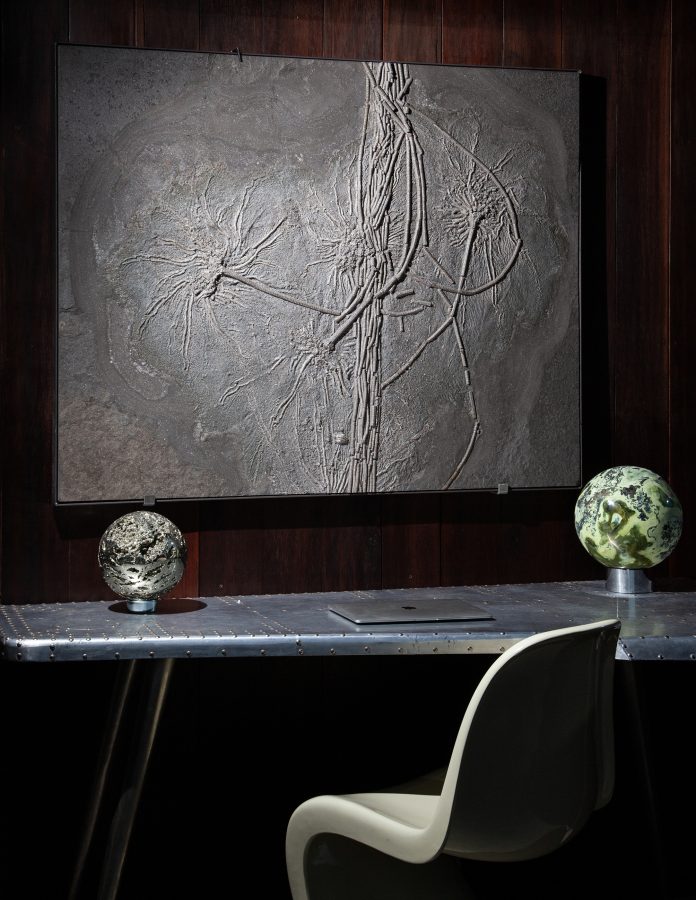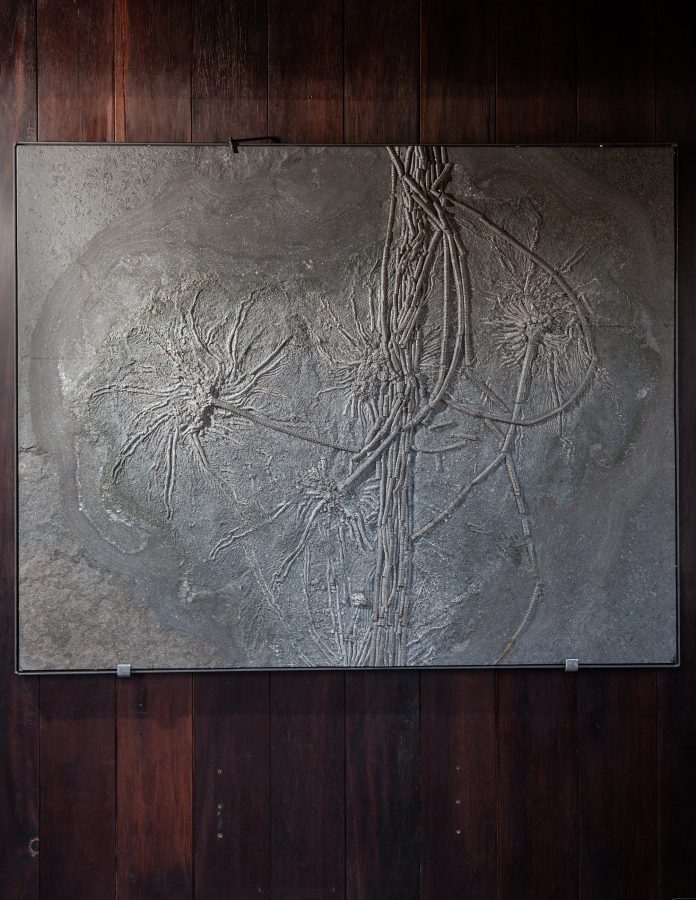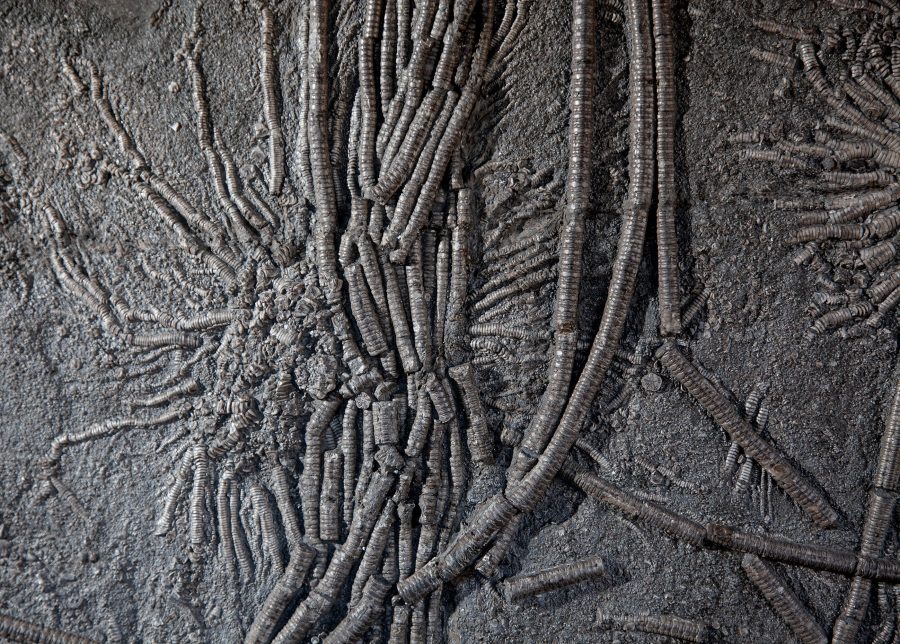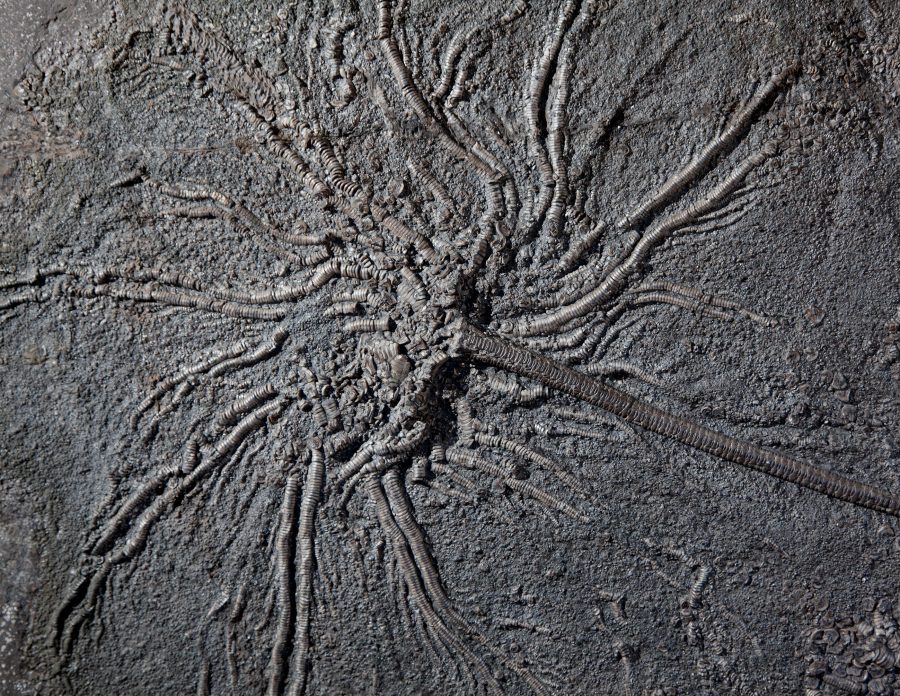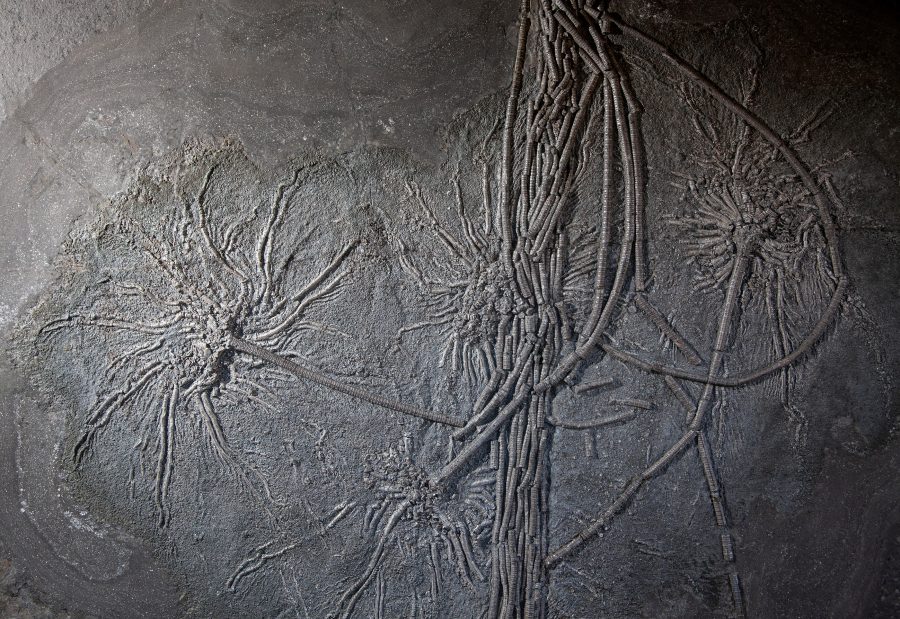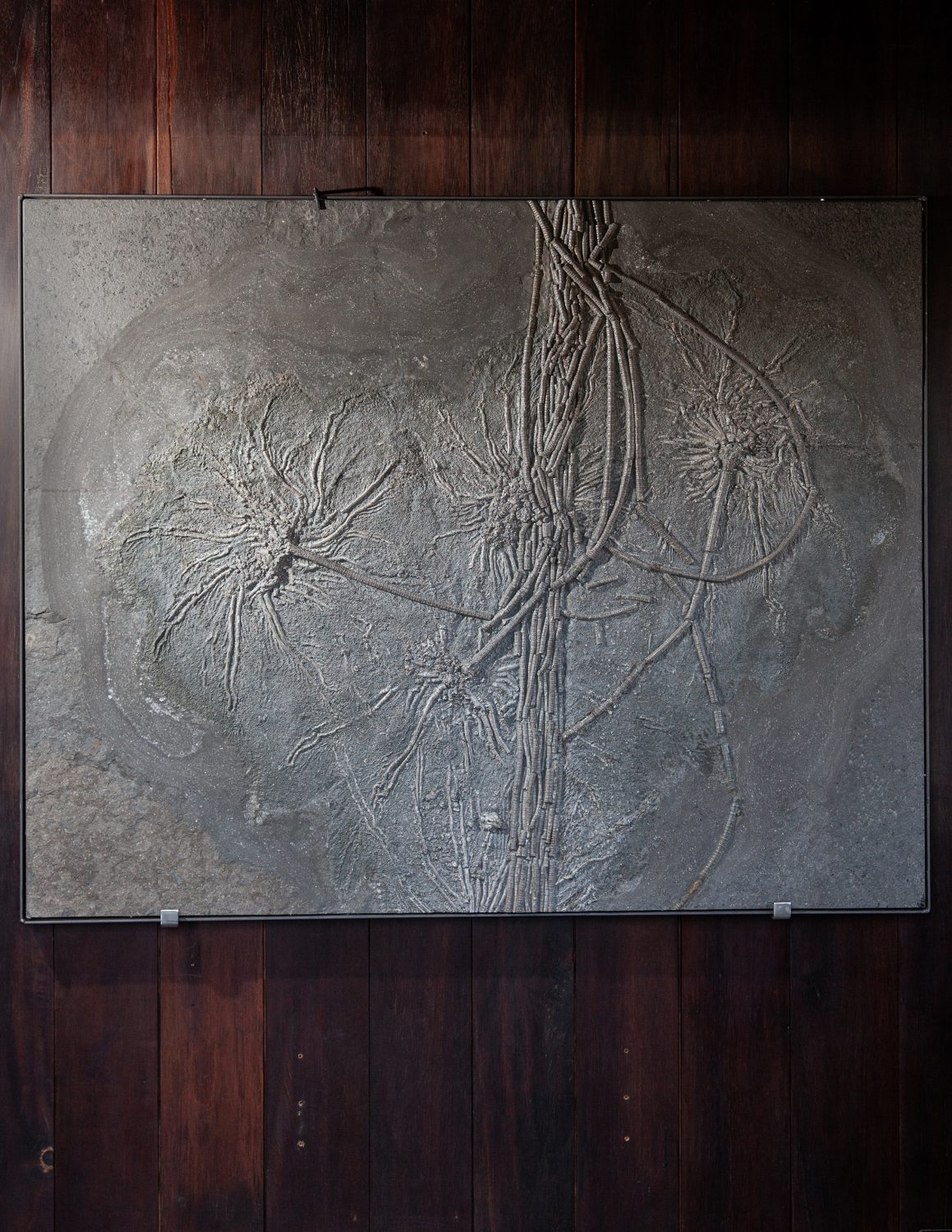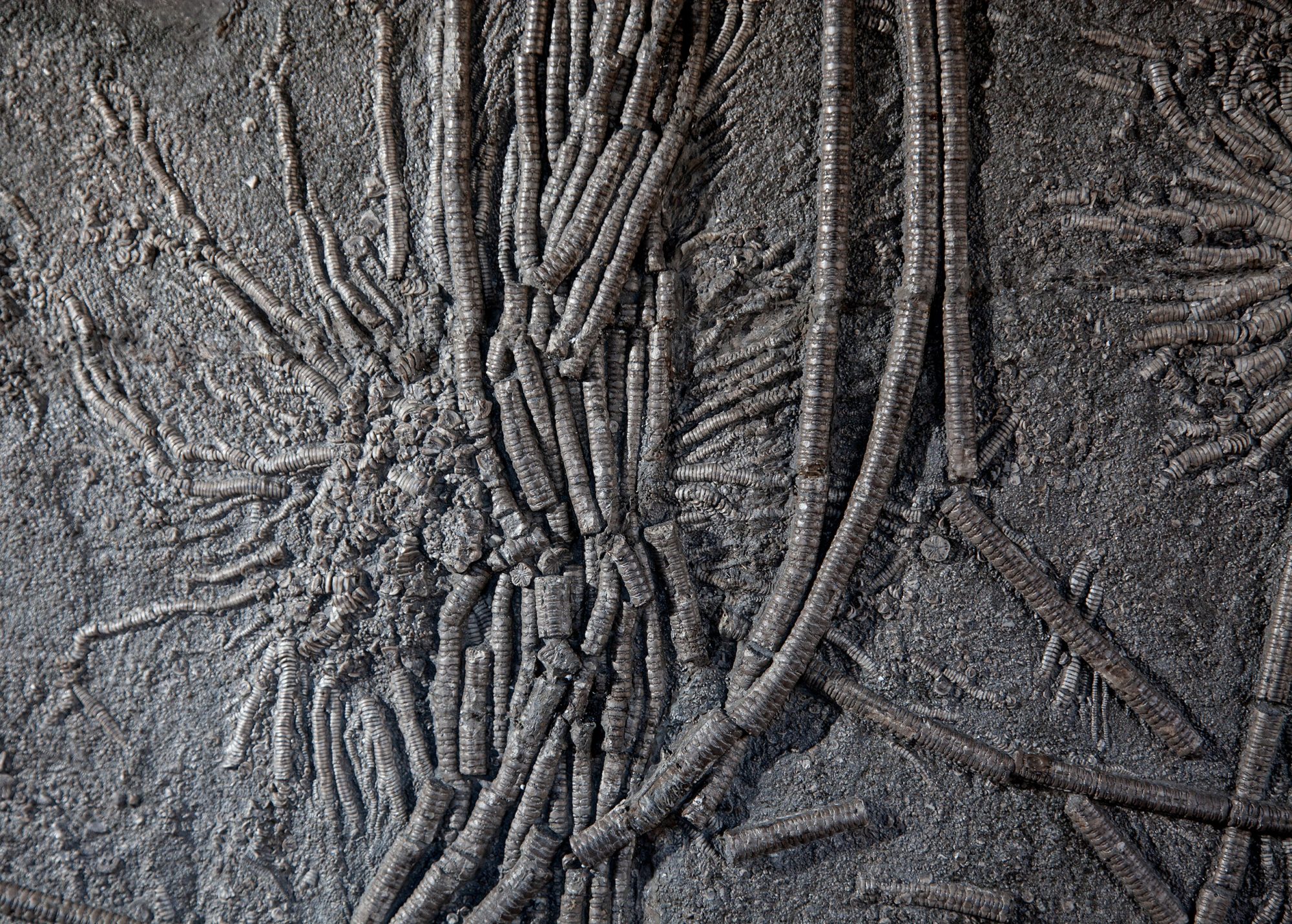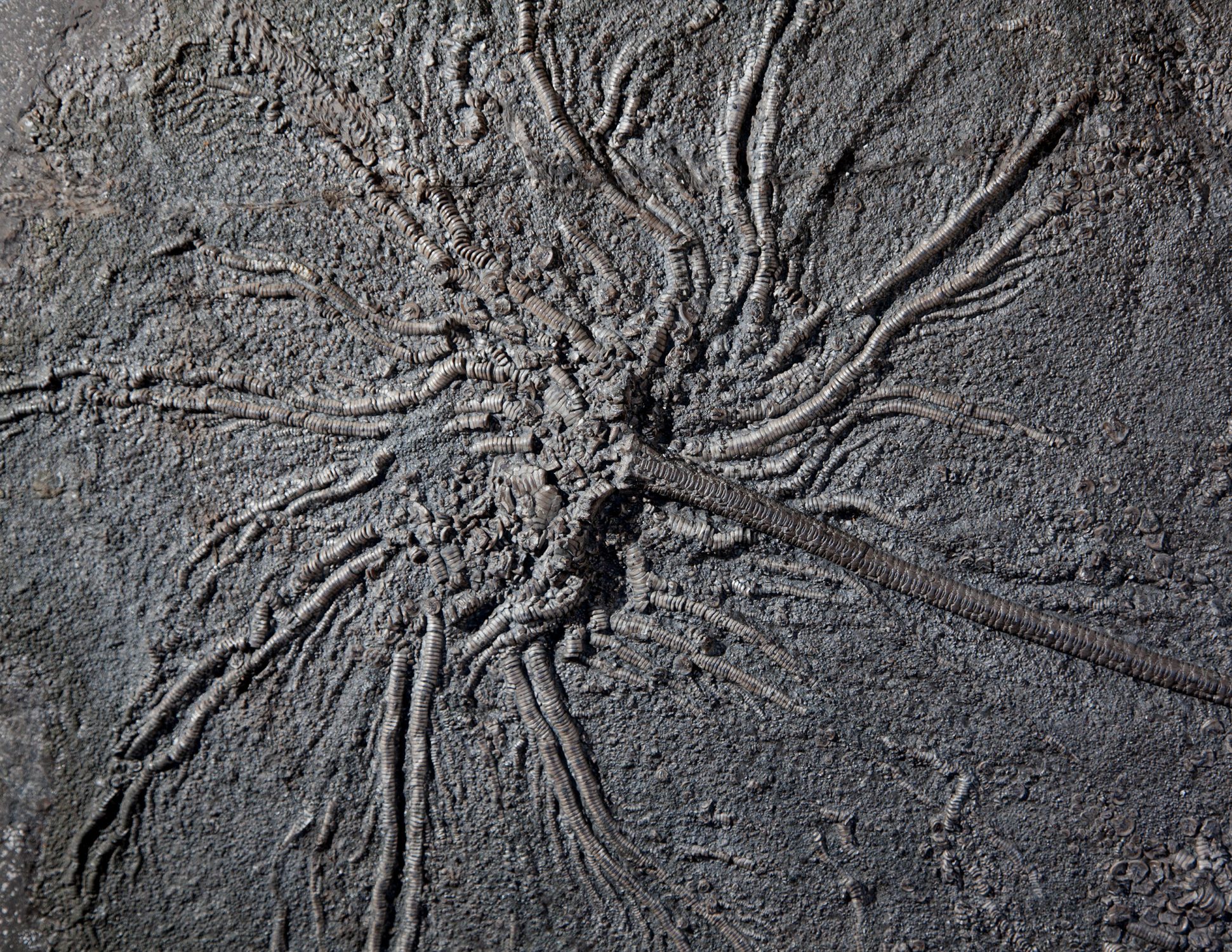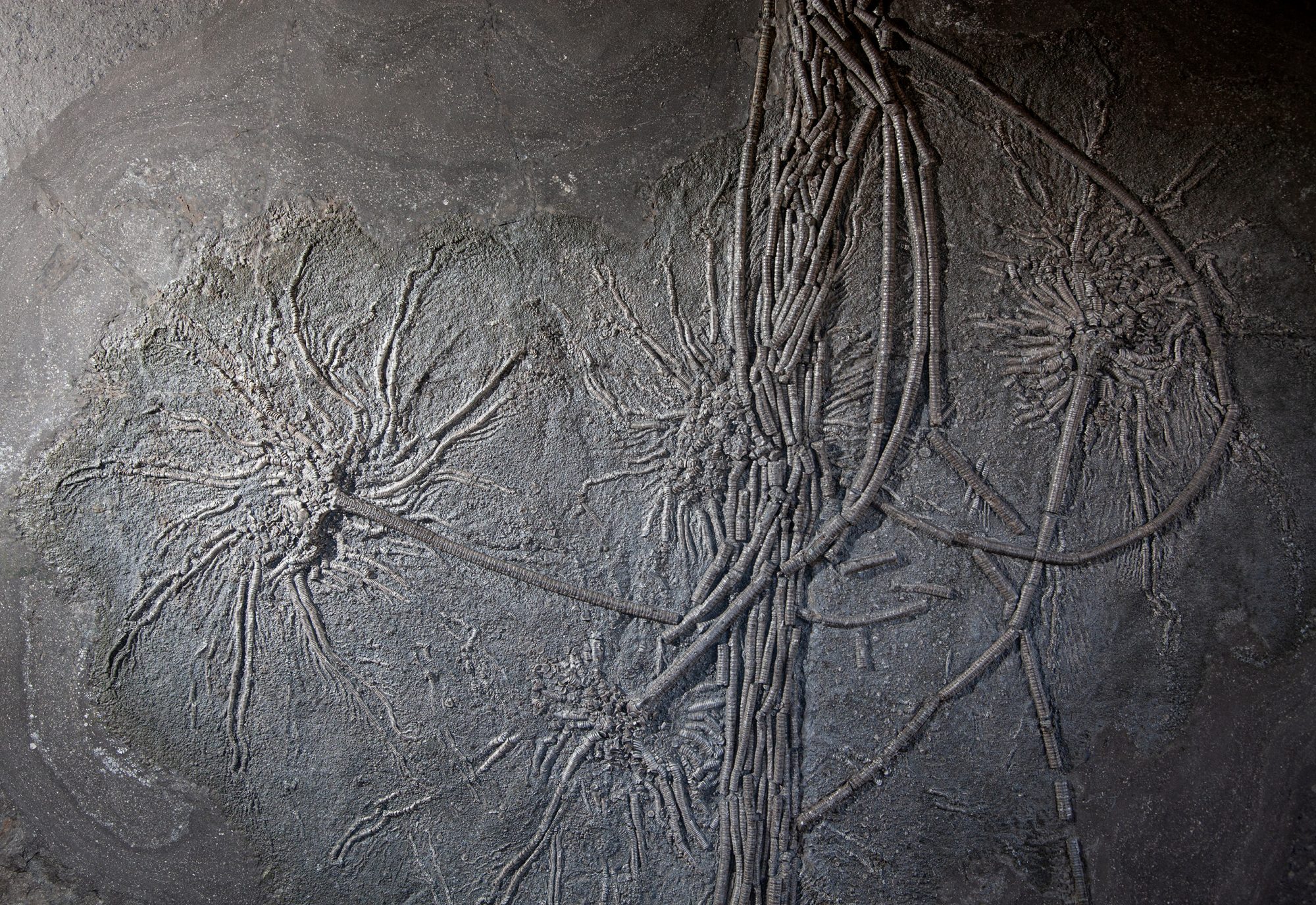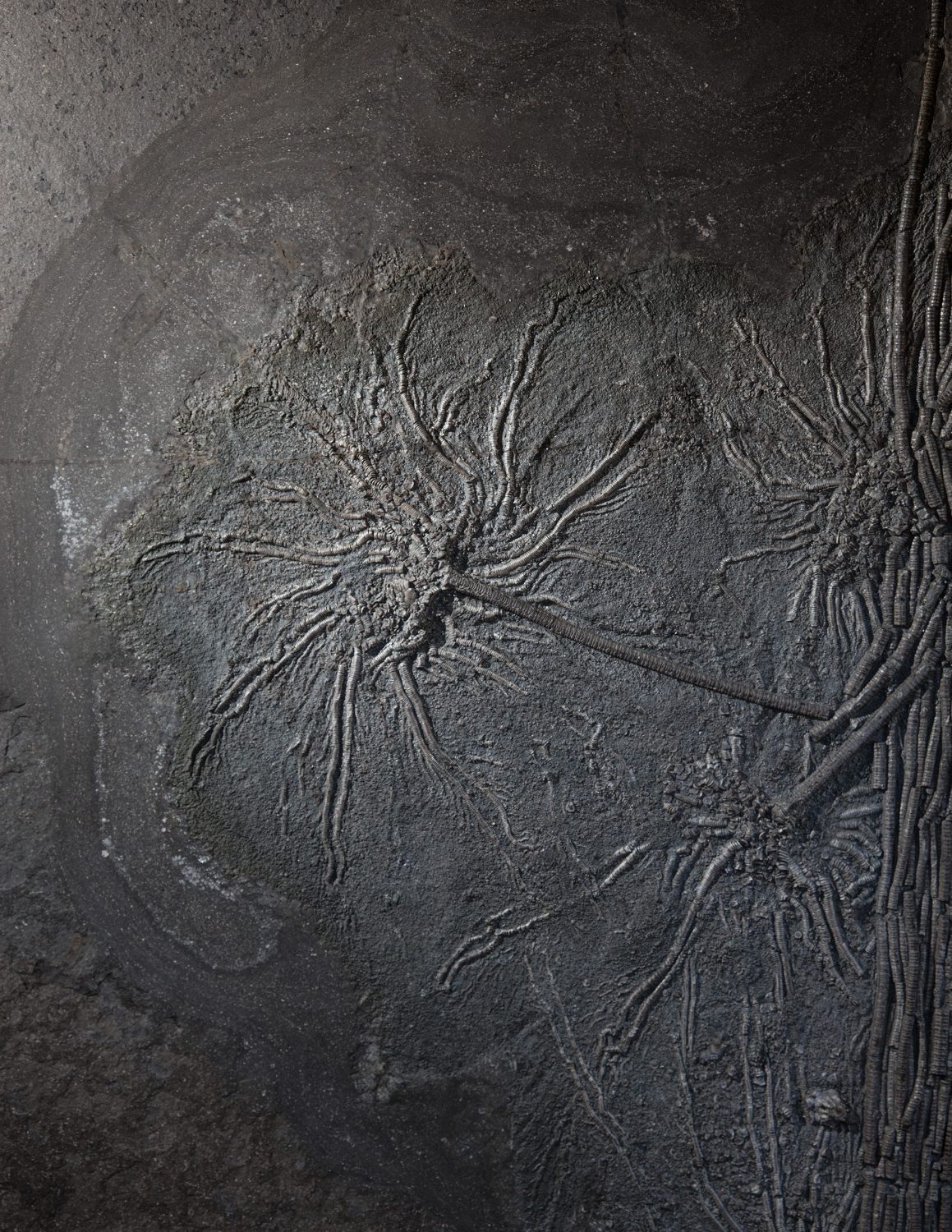| Species: | Seirocrinus subangularis sp |
|---|---|
| Location: | Holzmaden, Germany. |
| Age: | 180 Million Years (Jurassic Era) |
| Size: | H105cm W129.8cm D4cm |
| Price: | P.O.A |
| Availability: | Available | Enquire |
Crinoids from Holzmaden, a significant fossil site in Germany, represent a remarkable glimpse into the marine ecosystems of the Jurassic period. These ancient creatures, often referred to as “sea lilies,” are characterised by their distinctive cup-shaped bodies and feathery arms, which they used to filter feed on plankton and organic particles suspended in the water. The abundance of crinoid fossils found in Holzmaden highlights the area’s vibrant underwater life, showcasing a diverse array of species that thrived in the warm, shallow seas of the time. Their intricate structures, often preserved in fine limestone, provide a fascinating window into the ecological dynamics of prehistoric marine environments.
The study of Holzmaden’s crinoids has significant implications for understanding evolutionary biology and paleoecology. These fossils not only reveal the morphological diversity of crinoids but also illustrate their role in ancient food webs and sedimentary processes. By analysing their distribution and preservation, palaeontologists can infer environmental conditions, such as water depth and nutrient availability, during the Jurassic period. As keystone organisms in their ecosystems, crinoids contribute valuable data to reconstructing the complexities of life in ancient oceans and the evolutionary history of echinoderms, enriching our understanding of the planet’s biological past.
This wonderful Crinoid fossil bed is currently on display at our 77 Pimlico Road Gallery as part of The Holzmaden collection.

